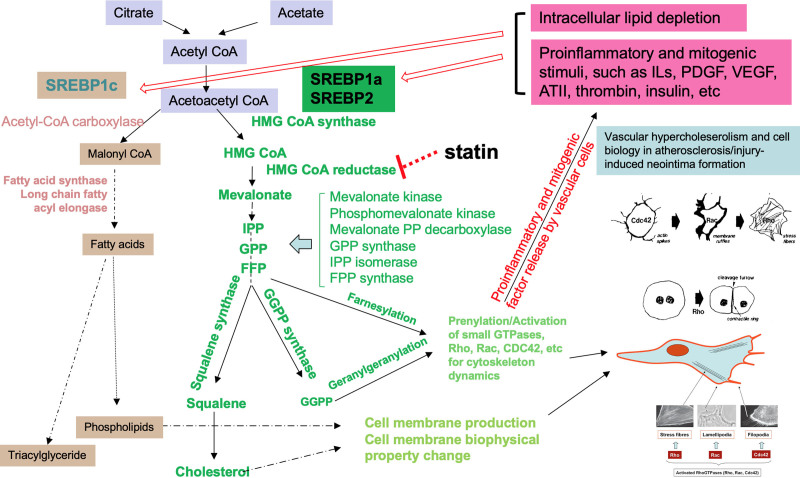FIGURE 1.
Gene regulation by SREBPs and vascular cell biology in vasculopathy. The diagram shows some of the genes regulated by SREBPs in the biosyntheses of cholesterol and fatty acids and their roles in atherosclerosis and injury-induced neointima formation. SREBP governs cholesterol and fatty acid biosyntheses and homeostasis. In response to proinflammatory or mitogenic factors, SREBP in vascular wall is upregulated (at gene transcription and protein level) and activated at protein level. The cholesterol biosynthesis in vascular cells such as endothelial cells and VSMCs synthesize cholesterol and phospholipids for cell membrane production and for membrane biophysical property adaptation needed for cell migration and proliferation. The cholesterol biosynthesis also produces isoprenoids such as FPP and GGPP for prenylation of small GTPases including Rho, Rac, and CDC42, among others to drive the cytoskeletal dynamics for cell functional change, migration, and proliferation, leading to atherosclerosis or injury-induced neointima formation. AT II indicates angiotensin II; bFGF, basic fibroblast growth factor; FPP, farnesyl diphosphate; GGPP, geranylgeranyl pyrophosphate; GPP, geranylgeranyl pyrophosphate synthase; HMG CoA, 3-hydroxy-3-methylglutaryl-CoA; ILs, interleukins; IPP, isopentenyl diphosphate; LPA, lysophosphatidic acid; PDGF, platelet-derived growth factor; SREBP, sterol regulatory element-binding protein; VEGF, vascular endothelial growth factor; VSMC, vascular smooth muscle cell.

